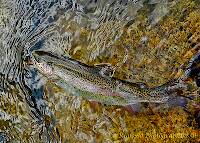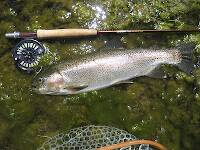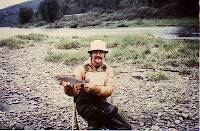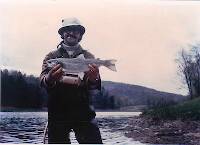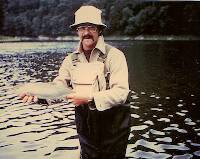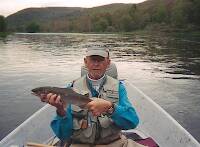
Hex Mayflies
Hexagenia limbata
The famous nocturnal Hex hatch of the Midwest (and a few other lucky locations) stirs to the surface mythically large brown trout that only touch streamers for the rest of the year.
Featured on the forum

This specimen keys to the Epeorus albertae group of species. Of the five species in that group, the two known in Washington state are Epeorus albertae and Epeorus dulciana. Of the two, albertae has been collected in vastly more locations in Washington than dulciana, suggesting it is far more common. On that basis alone I'm tentatively putting this nymph in albertae, with the large caveat that there's no real information to rule out dulciana.

Troutnut is a project started in 2003 by salmonid ecologist Jason "Troutnut" Neuswanger to help anglers and
fly tyers unabashedly embrace the entomological side of the sport. Learn more about Troutnut or
support the project for an enhanced experience here.
By Troutnut on September 28th, 2017
I've been itching to photograph one of these for years and had an unexpected opportunity tonight when this one flew into a house full of aquatic scientists. It's the first insect I've collected for this site by chasing it around a kitchen with a tupperware container.
Closeup insects by Troutnut from the South Fork Snoqualmie River in Washington
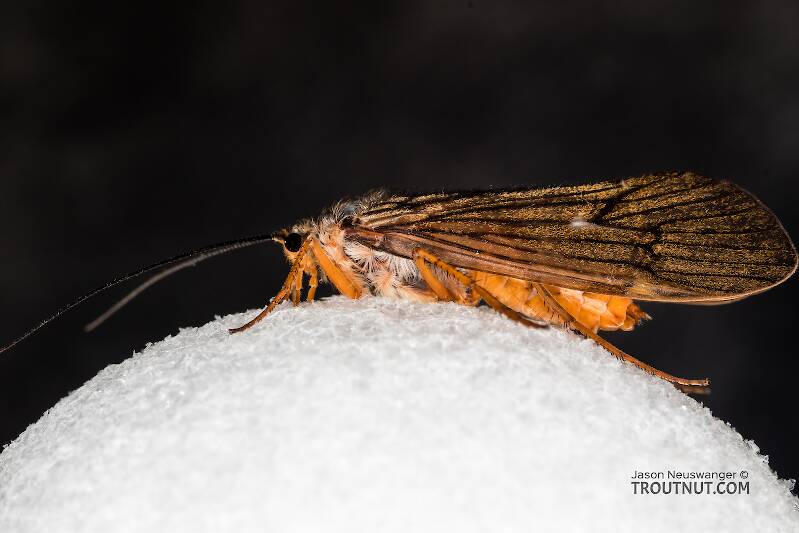
I've been hoping to add a really good October Caddis to the photo collection here for years, but so far I had struck out on finding them on the river. Tonight, this one flew into the kitchen during a pizza party at a house along the river, and was quickly pointed out -- one of the perks of hanging out with other aquatic biologists! Maybe next year I can finally get a salmonfly on taco night or something.
Comments / replies
Creno on Sep 30, 2017September 30th, 2017, 1:23 pm EDT
Great Dicosmoecus pics Jason. I presume you kept it :-) The globular 9th I think I am seeing and the very dark, contrasting vein coloration are more typical of D. gilvipes. If you kept it take a good look at the spur count. D. atripes is 1-2-2 while D. gilvipes is 1-3-4. From what I can see the meso-tibia in several of the pics have 3 spurs. However, I am fairly sure fish don't count spurs :-) Have fun
creno
creno
Troutnut on Sep 30, 2017September 30th, 2017, 2:24 pm EDT
Thanks Dave. I was wondering about that, after looking up the paper with the spur counts after taking the pictures. I thought from the pictures it looked more like 1-2-2, but your comment prompted me to go back and check it under the dissecting microscope. It's 1-3-4, clear as day. I just don't have as good an eye for spurs versus those smaller spikes on the legs in the photos, but the difference was really obvious under the scope.
Jason Neuswanger, Ph.D.
Troutnut and salmonid ecologist
Troutnut and salmonid ecologist
Wiflyfisher on Oct 6, 2017October 6th, 2017, 2:47 am EDT
Jason, excellent!
Now that WI has an extended inland trout season I have been on the hunt for the elusive Great Autumn Brown Sedges (Pycnopsyche), especially the pupae. So far no success.
Now that WI has an extended inland trout season I have been on the hunt for the elusive Great Autumn Brown Sedges (Pycnopsyche), especially the pupae. So far no success.
John S.
https://WiFlyFisher.com
https://WiFlyFisher.com
Quick Reply
Related Discussions
Topic
Replies
Last Reply
0
May 6, 2011
by Jtberez
by Jtberez
7
Dec 19, 2016
by Clark2016
by Clark2016




